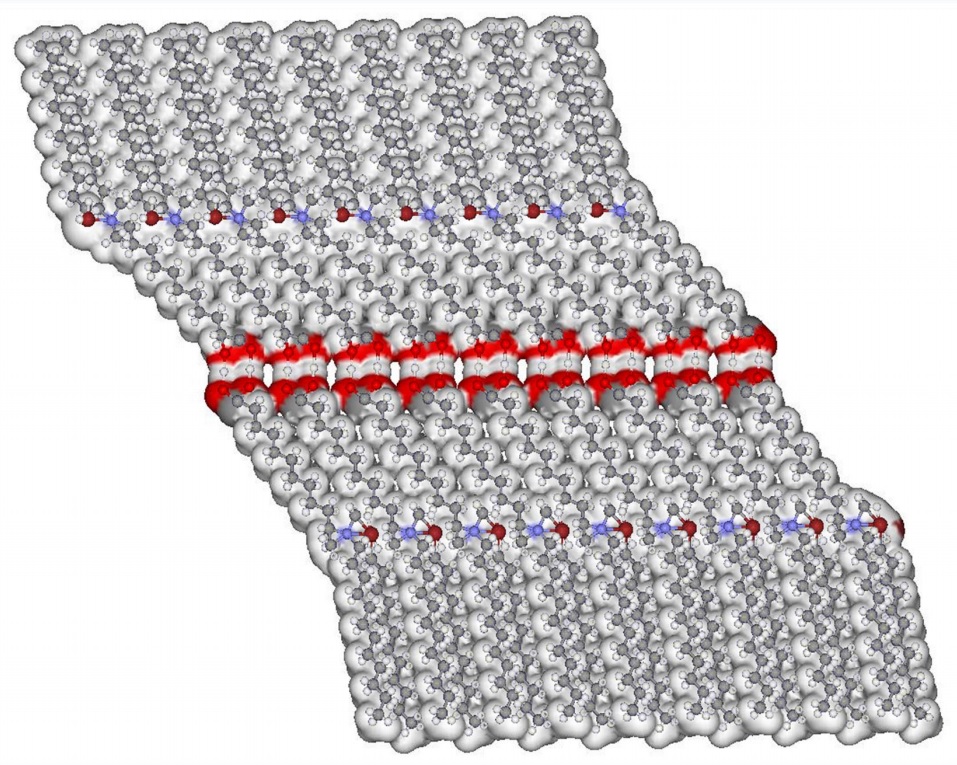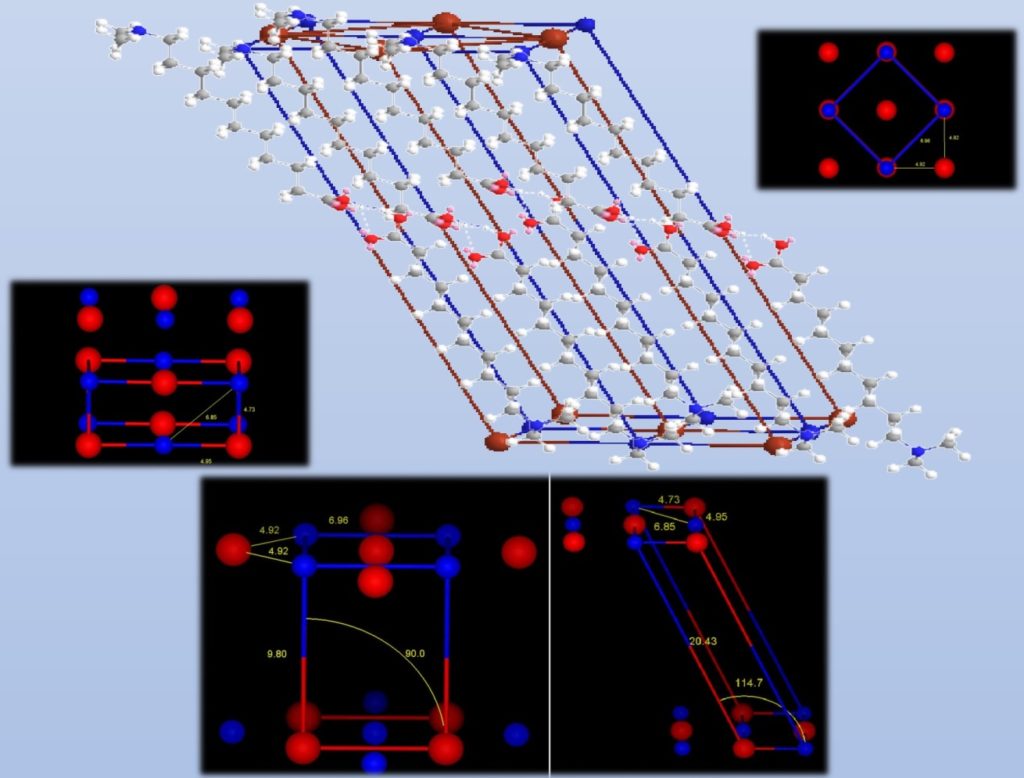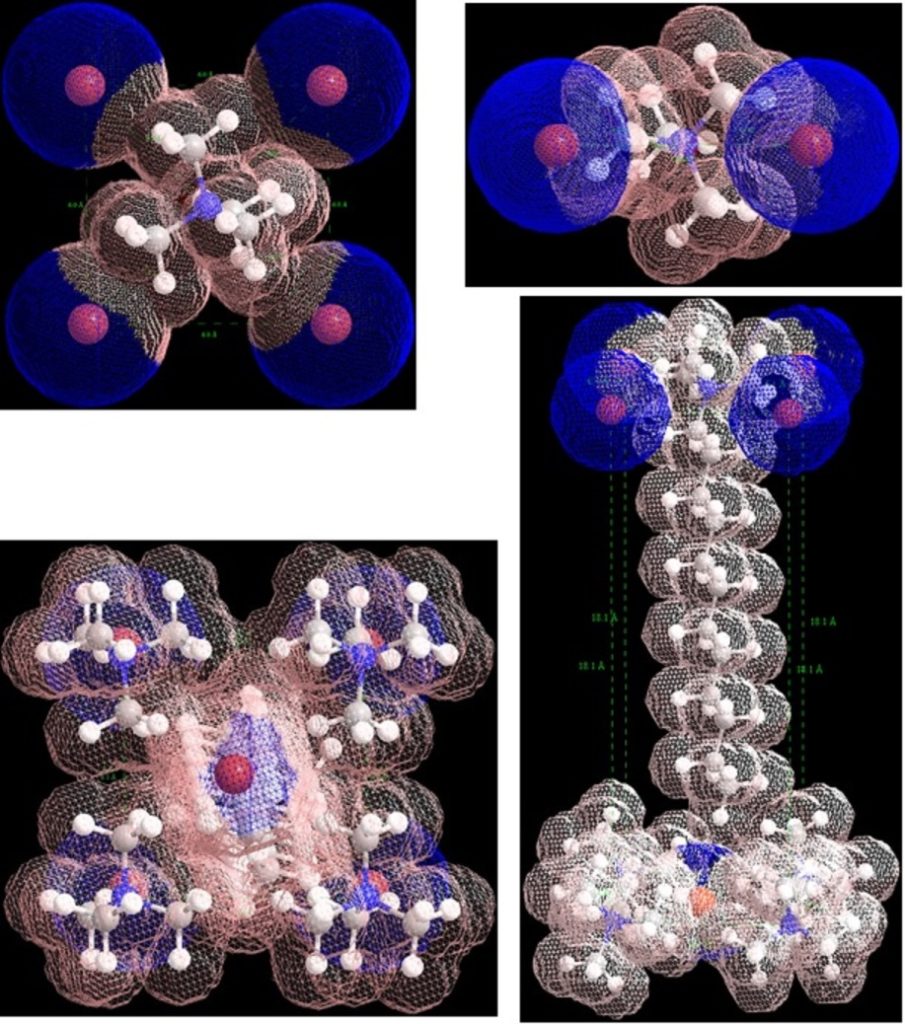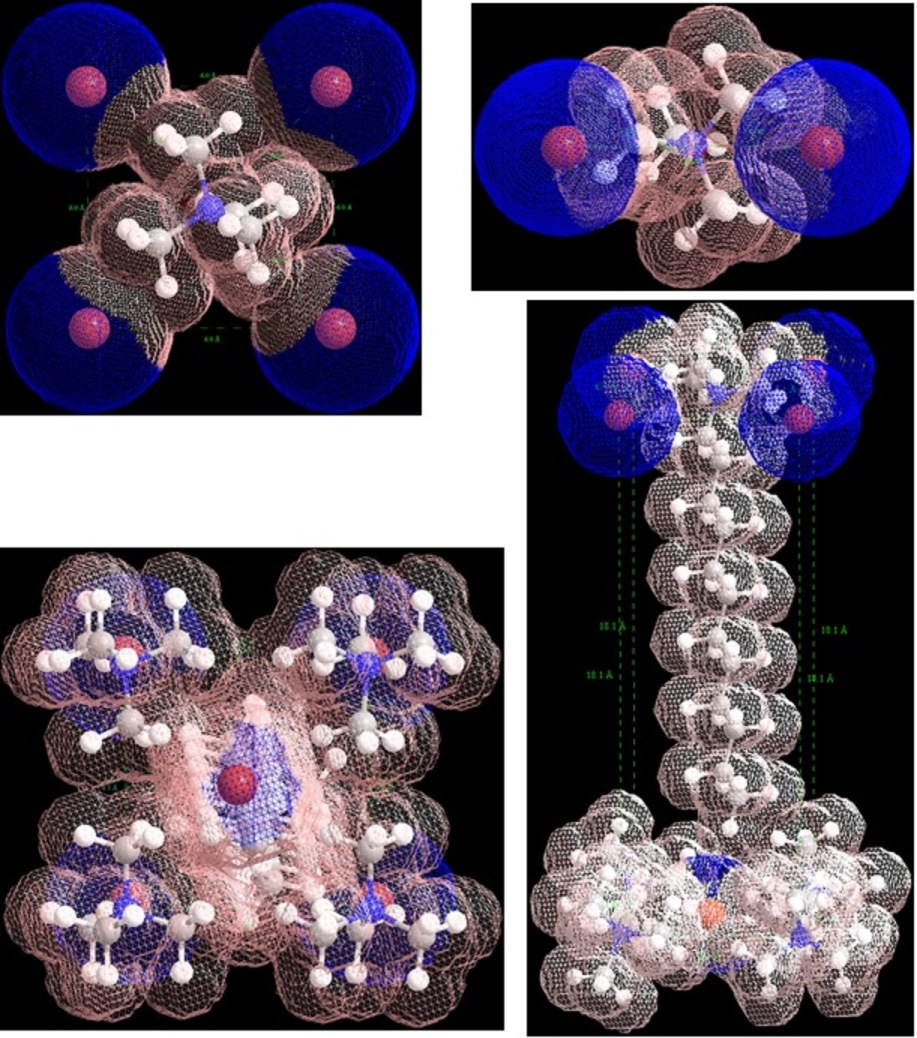Thermotropic liquid crystals and liquid crystal-nanoparticle composites
Previous research on liquid crystals encompassed amphiphilic low molecular or dendritic polymers, ionic low molecular weight or polymeric liquid crystals, and systems whose liquid crystalline properties resulted from molecular recognition of complementary molecules through directed hydrogen bonding interactions, ionic or dipole-dipole interactions. A variety of mesomorphic phases were observed and characterized by a variety of characterization techniques in our laboratory including polarizing optical microscopy, thermal analysis and small-angle X-ray diffraction.
Research is currently focused on chemical compounds forming rare smectic phases (smectic T, smectic H).1-3 The main objective is to enlighten factors (stereochemical constraints, electrostatic interactions, aliphatic chain stacking, intermolecular forces) contributing to the adoption of specific symmetries.4-7 In parallel, comparison of the geometrical parameters such as distances between atoms, molecular areas and volumes, lattice parameters with the closest two dimensional and three-dimensional organizations, is performed by the aid of molecular modeling. Work is also performed on composite liquid crystal/nanoparticle systems that are considered as promising new materials for a variety of applications in energy harvesting, displays, photonics, liquid crystal laser, etc. We are focusing on the impact of syperhydrophobic nanoplatelets or hydroxyapatite nanorods on some characteristic thermodynamic quantities of phase transitions towards and among mesophases.8-9



Related references
- M. Arkas, D. Tsiourvas, C. M. Paleos and A. Skoulios, Smectic Mesophases from Dihydroxy Derivatives of Quaternary Alkyl-ammonium Salts. Chem. Eur. J. 1999, 5, 3202-3207.
- A. Nikokavoura, D. Tsiourvas, M. Arkas, Z. Sideratou, C. M. Paleos, Thermotropic liquid crystalline behaviour of piperazinium and homopiperazinium alkylsulphates. Liq. Cryst. 2002, 29, 1547-1553.
- M. Arkas, I. Kitsou, F. Petrakli, Mimicking the behaviour of rigid rod molecules. Smectic H liquid crystals from amphiphilic quaternary ammonium salts. Liq. Cryst. 2018, 45, 70-83.
- D. Tsiourvas, M. Arkas, Columnar and smectic self-assembly deriving from non ionic amphiphilic hyperbranched polyethylene imine polymers and induced by hydrogen bonding and segregation into polar and non polar parts. Polymer (United Kingdom) 2013, 54, 1114-1122.
- M. Arkas, A. Papavasiliou, Effects of Hydrogen-bonding on the liquid crystalline properties of dendritic polymers, (Ed. Vijay Kumar Thakur), Chapter 6 in Liquid Crystalline Polymers: Structure and Chemistry. 2015 Springer.
- M. Arkas, I. Kitsou, A. Gkouma, M. Papageorgiou, The role of hydrogen bonds in the mesomorphic behaviour of supramolecular assemblies organized in dendritic architectures. Liq. Cryst. Reviews 2019, 7, 60-105.
- M. Arkas, M. Douloudi, M. Vardavoulias, T. Katsika, Lamellar tetragonal symmetry of amphiphilic thermotropic ionic liquid crystals in the framework of other closely related highly ordered structures. Symmetry 2022, 14, 394.
- C. Kyrou, D. Tsiourvas, S. Kralj, I. Lelidis, Effect of superhydrophobic nanoplatelets on the phase behaviour of liquid crystals, Journal of Molecular Liquids 298, 111984 (2020).
- C. Kyrou, M. Ambrozic, D. Tsiourvas, S. Kralj, S. B. Atata, I. Lelidis. Effect of quantum dots on the phase behavior and order of 8CB liquid crystal. Journal of Molecular Liquids, 387, 122568 (2023).


